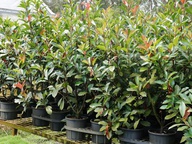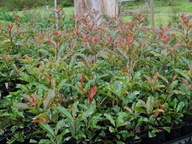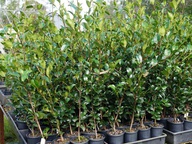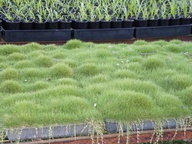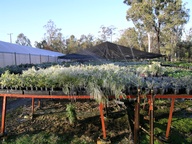Pests
In many cases the most important thing in pest control is to identify the pest that you are trying to control as spraying with the wrong spray can actually favour the insect by killing off its predators without affecting the pest itself.
The first thing you will need for this is a folding jeweler's hand lense with at least a 20x magnification. These can be obtained from many cheapie shops or on ebay. Examining the back of leaves, inside growing tips and deep amongst flower petals with such a lense will often reveal pests which you did not know were present.
Specific pest and disease identification is beyond the scope of this guide but the general broad groups are listed below.
Once you have identified or made a good calculated guess about what pest or disease you are dealing with you should if possible pursue a non chemical method of managing the problem. Sometime it may be enough to remove the affected parts of the plant.
If chemicals are needed then you will find the searchable database accessable via the link below a good source of information.
Australian Pesticides and Veterinary Medicines Authority
Chewing insects
These include caterpillars, grasshoppers, leaf eating beatles etc. Their damage is characterised by parts chewed from or torn from leaves, stems, flowers, buds etc. Sometimes, if the pest is quite small leaves may be chewed out between the veins leaving a leaf skeleton.
Sucking insects
These include aphids, scale insects and leafhoppers. Symptoms may vary greatly from general wilting and lack of vigour to distortion of growth and discolouration. One very common tell tail sign that this type of insect is active however is a black sooty mould that grows on the "honey dew" secreted by these insects.
When spraying sucking insects it is important to spray according to the recommended spraying intervals, while scale insects, particularly armoured scale, may have to be sprayed when the crawlers are emerging from under the tough scale.
Rasping insects
These include thrips and mites. While many of these can be spotted with the naked eye others are very tiny and hard to detect. The very common two spotted mite feeds on the underside of the leaf usually quite close to the mid rib. It leaves a characteristic speckled pattern visible on top of the leaf and can be easily identified with a hand lens. Other mites are microscopic. They may live in the growing tips and may evade detection even by experts.
Thrips can also be hard to detect as they are quite small and hide amongst flower petals, buds and growing tips. When found they can be easily identified using a hand lens and are characterised by their elongated bodies.
The problem with thrips and mites is that they are usually not susceptible to many of the systemic insectides which will control other pests becasue of the part of the plant tissue upon which they feed, and because they often evade identification it may be sometimes necessary to make a calculated guess. If a chemical control is selected however, it is vital to spray according to the recommended intervals.






